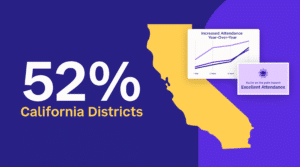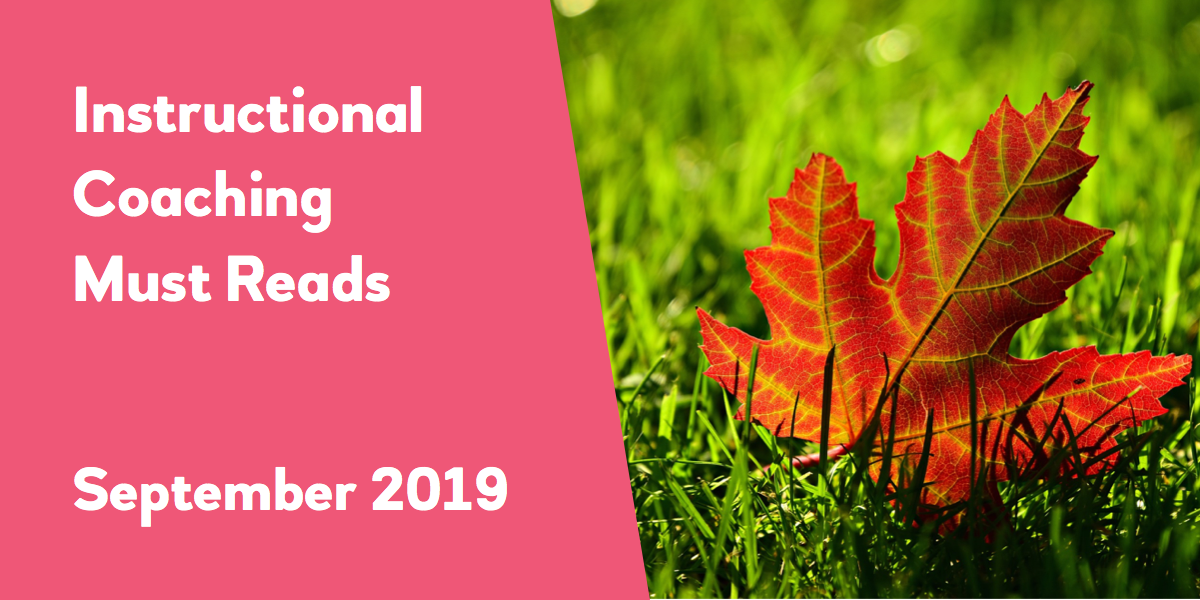
Featured Resource
Why Over Half of California School Districts Trust SchoolStatus
Read More >Join Mission: Attendance to reduce chronic absenteeism in 2025-26! >> Learn How <<






Fall is officially upon us! We’ve raked through a pile of coaching articles from September’s weekly coaching roundups and have the best of the best for you. Learn how to foster relationships, introduce coaching and mentoring into your organization, some helpful strategies to grow new or experienced teachers, and more!
Tired of waiting until the end of the month to read your coaching news? Join our weekly coaching roundup to get these sent directly to your inbox every week!
{{cta(‘1623fdae-2dee-4cee-a003-34270e4a47e4′,’justifycenter’)}}
Delia Racines shares four strategies that coaches can practice to help new or experienced teachers grow.
“As coaches, we must go slow to go fast. . . . Offering ideas is valuable, but relationship building must come first. . . . New coaches may assume that veteran teachers won’t want or need their help. Believing instead that every teacher is receptive to coaching is a simple way to establish a framework for success.”
Robyn Hartzell shares some of her techniques that not only help organize a coach’s work but promote effective communication throughout the coaching process as well.
“Since it’s almost impossible to conquer everything at once, we have to target our coaching for the best results. I’ve found that narrowing my attention to three basic areas and creating some standard questions to guide my observations and conversations helps tremendously. The areas I focus my attention on are curriculum and planning, instructional practices and routines, and professional development and resources.”
Nicole Turner highlights how coaches’ positive feedback for their teachers leads to more authentic relationships.
“One of the biggest mistakes made in coaching is not delivering positive feedback. We may make a note of the positive things we saw in the classroom for a future conversation or just as a note, but often times we don’t communicate that with those we are working with. . . . By opening up positive communication with your teachers, you are opening the door for better communication all around.”
Laural Matthews reflects on her transition back to the classroom and the tools she uses to prepare for a year of teaching.
“At the beginning of my career, I can state that I built lessons and units first and then, hopefully, adapted the learning to the students during the lessons. As I reflect back on this approach, I should’ve thought about my students first, identified their barriers to learning, and used their interests to plan more effectively. After all, it’s my job to understand my learners and plan accordingly. . . . We must assess, make observations, and have conversations. We cannot be too rigid in our long-range vision as our students may not achieve at the speed with which we have planned.”
Want to make your coaching impact more visible? |
|
TeachBoost Coach helps you stay organized, encourage reflection, and maximize student achievement through ongoing teacher development by automating the important, but tedious, tasks that come along with coaching! Click the link below to see how we can help you with your upcoming coaching cycles. {{cta(‘997af1e4-1e4d-4d17-8c80-43a15a5af702′,’justifycenter’)}} |
Virginia Soukup focuses in on just what coaches do day-to-day and how she can better support the teachers she works with.
“This newsletter was created to provide another tool for communicating and providing educational resources and articles that are relevant to our work. . . . The purpose of this first issue is to tell you a little about myself and the many ways I can provide support through coaching. As your Instructional Coach, my role involves partnering with you, the teachers, to provide instructional support in various ways.”
Steve Barkley explores ideas for building relationships with teachers who are new to working with a coach or mentor.
“It’s important for the beginning teacher to discover that making him or herself vulnerable to input from colleagues is a career-long path to great teaching. It’s critical that the beginning teacher not see the mentor as an evaluator, not see the mentor holding some measuring stick up in front of the teacher saying when you meet these criteria, mentoring will be over. . . . Coaches can work with mentors to introduce coaching and mentoring as a gift. All teachers deserve coaching vs need coaching.”
Christina Podroza reiterates the impact that goal-setting and crystal-clear action steps have on professional growth.
“My Wildly Important Goal for this year is making sure that every learner (adult and child) in my school community ends the year knowing at least one strength they are incredibly talented at. This is not going to be an effort that I can do alone. It will definitely be a team effort including all staff members as well as our parent community. . . . Every time I visit a classroom I’ll put a checkmark next to the staff members’ name followed by an email with positive feedback.”
Rick Wormelli provides 15 tips to make pre- and post-observation conversations more productive.
“When we critique, evaluate, or provide feedback to them in such a manner that raises their defensive walls for self-preservation, there’s little to be gained; the interaction isn’t constructive. . . . Let’s empower teachers (ourselves) by getting these reflective coaching skills and insights into their (our) daily repertoire. The ultimate goal here is our self-efficacy: We can self-monitor/analyze/reflect, revise practices based on those reflections, grow professionally, and ultimately, improve student learning in our classrooms.”
Kristy Gaudio asks three reflective questions that help coaches identify their role.
“While instructional coaching itself can differ between districts and their schools, each of us does have the ability to carve out an identity that matches our philosophies, talents, and skills. . . . We’re all passionate about learning and students or none of us would be here! So dig deep. What specific skills or passions do you have that lend themselves to coaching others?”
{{cta(’34b13594-505a-497a-8a75-16ae35acf14d’)}}
Have some interesting instructional leadership news?
Share it with TeachBoost and we’ll highlight it here
 SchoolStatusSchoolStatus gives educators the clarity and tools they need to get students to class and keep them moving ahead. Through our integrated suite of data-driven products, we help districts spot attendance patterns early, reach families in ways that work for them, and support teacher growth with meaningful feedback. Our solutions include automated attendance interventions, multi-channel family communications in 130+ languages, educator development and coaching, streamlined digital workflows, and engaging school websites. Serving over 22 million students across thousands of districts in all 50 states, SchoolStatus helps teachers and staff see what matters, act with speed, and stay focused on students.
SchoolStatusSchoolStatus gives educators the clarity and tools they need to get students to class and keep them moving ahead. Through our integrated suite of data-driven products, we help districts spot attendance patterns early, reach families in ways that work for them, and support teacher growth with meaningful feedback. Our solutions include automated attendance interventions, multi-channel family communications in 130+ languages, educator development and coaching, streamlined digital workflows, and engaging school websites. Serving over 22 million students across thousands of districts in all 50 states, SchoolStatus helps teachers and staff see what matters, act with speed, and stay focused on students.
News, articles, and tips for meeting your district’s goals—delivered to your inbox.






